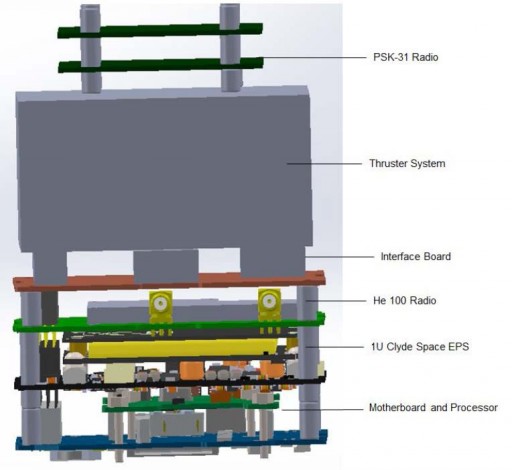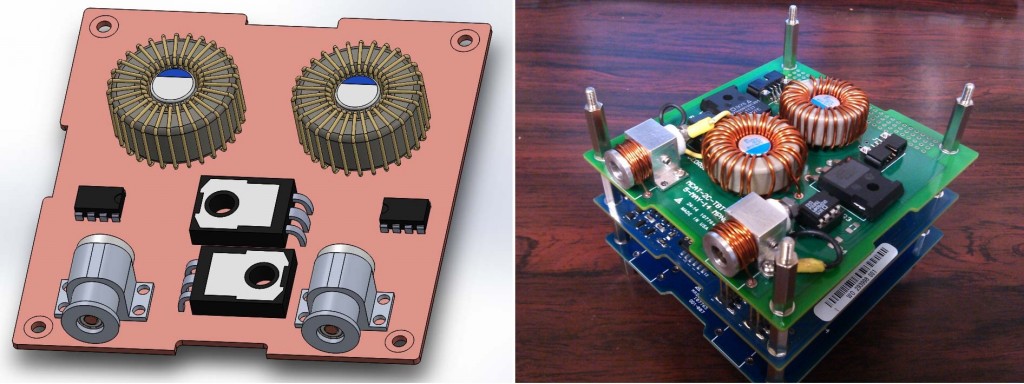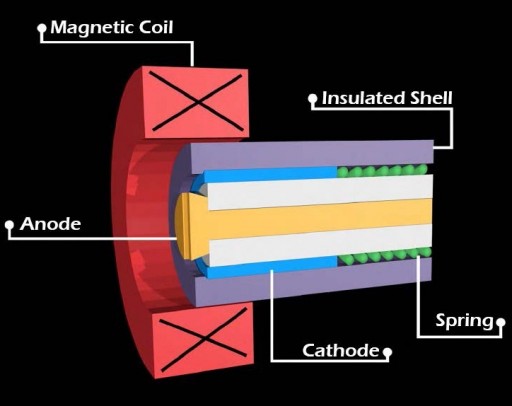BRICSat-P

BRICSat-P, known also by its full name Ballistic Reinforced Communication Satellite, is an experimental satellite mission operated by the US Naval Academy Satellite Lab to demonstrate the on-orbit operation of a Micro-Cathode Arc Thruster (µCAT). The satellite also carries on Amateur Communications Payload to be accessed by radio operators around the world. The satellite is 1.5U in size and weighs 1.9 Kilograms.
µCAT aims to create a small-satellite propulsion system that uses low-cost components, eliminates the use of pressurized systems, operates with low-power, is scalable and modular, and is safe for the satellite. The µCAT system consists of several Thruster Heads – each consisting of two coaxial electrodes that are separated by several millimeters of Electric Solid Propellant with a Magnetic Coil on the forward end of the thruster. Each thruster head measures one centimeter in diameter and 2.29 centimeters in length.
The Anode is located in the center of the thruster while the titanium Cathode material builds the external shell of the thruster. The solid propellant used in these thrusters can only ignite when an electric current is applied and only sustain operation as long as the current is present. This allows for precise control and a reliable ignition.
Conventional solid-fueled thrusters can not be controlled – once ignited, they burn until expending all their propellant. Thrust on the µCAT is generated through outstreaming electrons and atoms. These types of thrusters are an interesting alternative because they require no moving parts and their propellants are extremely safe as they are insensitive to flames or electrical sparks.
Propulsion Board


The µCAT thrusters operate at frequencies between one and 20 Hz, generating impulse bits of 1mNs per pulse and operate at a specific impulse of 2000 to 3000 seconds, much higher than conventional liquid-fueled thruster systems. The mass of the system with its individual thrusters and the central Propulsion Power Unit is around 200 grams. Overall, for a 4kg satellite, the system can deliver a delta-v of 300m/s.
BRICSat-P uses four thruster heads that are arranged around the center of mass of the spacecraft. The µCAT thruster system will be used for the initial de-tumble of the CubeSat, the control of an initial spin around two satellite axes, precise attitude hold control and operation in delta-v mode. Gyroscopes will be used to measure the performance of the propulsion system.
The de-tumble experiment is expected to take seven orbits before the satellite enters a stable attitude with a target stability of under one degree per second. The rotational experiment will operate the thrusters at a 22% duty cycle to spin up to 6RPM with the satellite cameras acquiring photos of the operation of the thrusters.
For a delta-v maneuver, the four thrusters will be fired along the magnetic field line of Earth, measured by the vehicle’s magnetometers.
BRICSat-P also carries two amateur communication payloads – an Automatic Packet Reporting System (APRS) Transponder with downlink at 437 MHZ and uplink at 145 MHz, and a PSK31 Transponder with a 28MHz uplink and standard UHF downlink.
